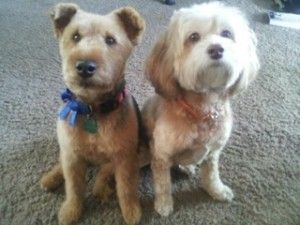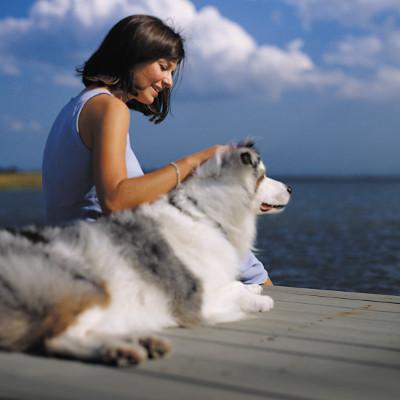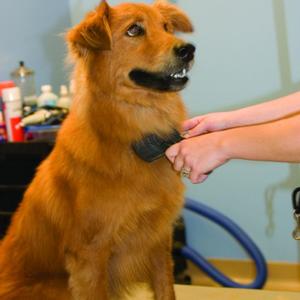By Dr. Patrick Mahaney, VDM CVA CVJ
Many pet owners don’t worry about grooming their pet until there’s a problem, such as matting or unpleasant smells. After all, some pets, especially cats and shedding dogs, can keep themselves sufficiently clean, and others only need the occasional bath to remove the day-to-day dirt and grime.
But older pets are generally less able to groom themselves. This is typically because seniors are less flexible, whether from arthritis and joint pain or just the stiffness of old age. Senior pets have more trouble cleaning certain parts of their body, especially their genitals and paws. If these areas don’t get cleaned, then feces, urine, ticks, burs, and other debris can get stuck in your pet’s fur and cause health problems, such as skin inflammation (dermatitis) and bacterial infection (pyoderma).
Owners of geriatric and less-abled canines and felines must pay extra attention to these areas that younger and more flexible canines and felines don’t have as much trouble with. Another reason to keep your pet’s backside clean is that older or mobility-compromised pets are often less able to find a comfortable position when using the bathroom.
A senior cat suffering pain from an fused backbone or arthritic joints may be less comfortable while squatting. That’s when you’ll see “cling-ons,” litter clumps in the fur.
Dogs with spinal cord injuries from a ruptured disc who have lost the ability to properly use their hind limbs may struggle with bending down and getting up from a squat, so they might walk through their own waste. 
This is what Patrick's dog Cardiff looks like with long hair. With a few easy tips, Patrick can groom Cardiff himself.
Grooming your senior pet should be a priority, but it doesn’t have to be a chore. Here are some tips to help prevent or reduce grooming problems associated with senior, less-mobile, and obese pets:
1. Lose the extra weight Overweight and obese pets have a harder time accessing hard-to-reach areas. Besides the positive health effects of maintaining a lean body condition score, a thin to normal pet will be better able to self-groom.
Not sure if your pet is overweight? Compare your pet to Body Condition Scoring Chart created by the Nutritional Support Services at The Ohio State University College of Veterinary Medicine. Then talk to your vet about weight loss options.
It’s much harder for your pets to be active to promote weight loss once they are overweight or obese, so it’s better to always restrict calories and maintain their lean body condition from the juvenile through geriatric years.
2. Keep fur short Long hair catches dirt and debris and can create a microenvironment for disease, plus it’s easier to maintain short coats. To trim your pet, use quiet and pet-appropriate electric trimmers to keep hair short around the genitals, paws, and other problem areas your pet has trouble cleaning. Avoid using scissors, as a chunk of skin could accidentally be removed along with that unsightly hair mat.
If you aren’t comfortable with or are unable to trim your pet’s hair, then make the request of a groomer. Ask for a sanitary cut or trim. Trained professionals will likely complete the task in a quicker, less traumatic, and more aesthetically-pleasing manner. Be sure to ask about any sedatives or medicine they administer to keep your dog calm.
 Doesn't Cardiff look refreshed after his haircut? He even made a new friend!
Doesn't Cardiff look refreshed after his haircut? He even made a new friend!
3. Promote Flexibility and Comfort Instead of waiting for your pet to show signs of arthritis pain (limping, low energy, exercise intolerance, difficulty moving up/down stairs, etc.), be proactive in providing joint support and reducing inflammation in a safe and natural manner.
Nutraceuticals (food-derived substances having medicinal benefits) like glucosamine, chondroitin, MSM, anti-oxidants, and omega fatty acids can yield these benefits with consistent use under the guidance of a veterinarian.
They’re especially effective when started as a preventative before joint-related discomfort begins. Nutraceuticals can also help slow the progression of degenerative joint disease (the result of chronic arthritis), have an anti-inflammatory effect on achy joints, and promote better functioning of the nervous system.




